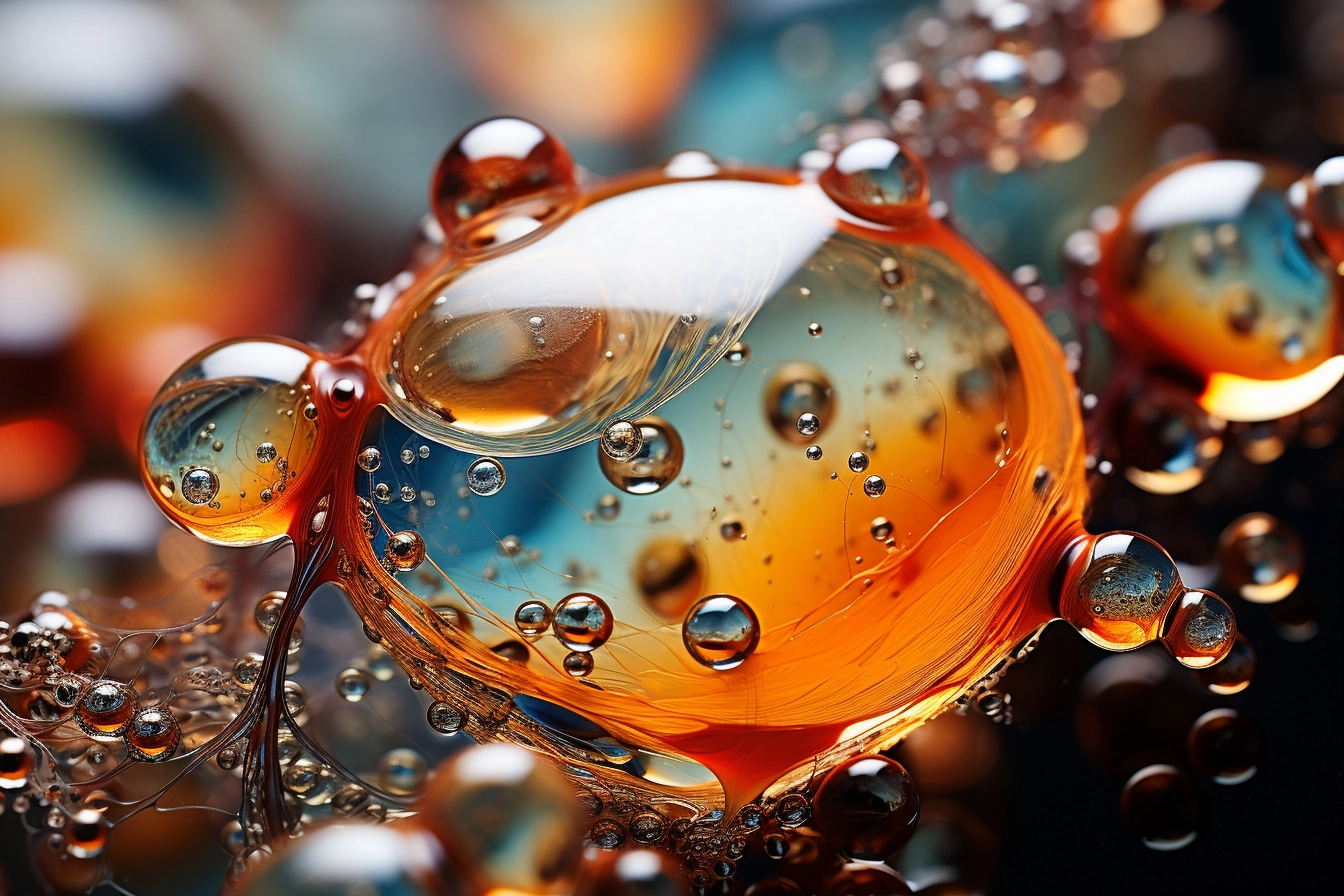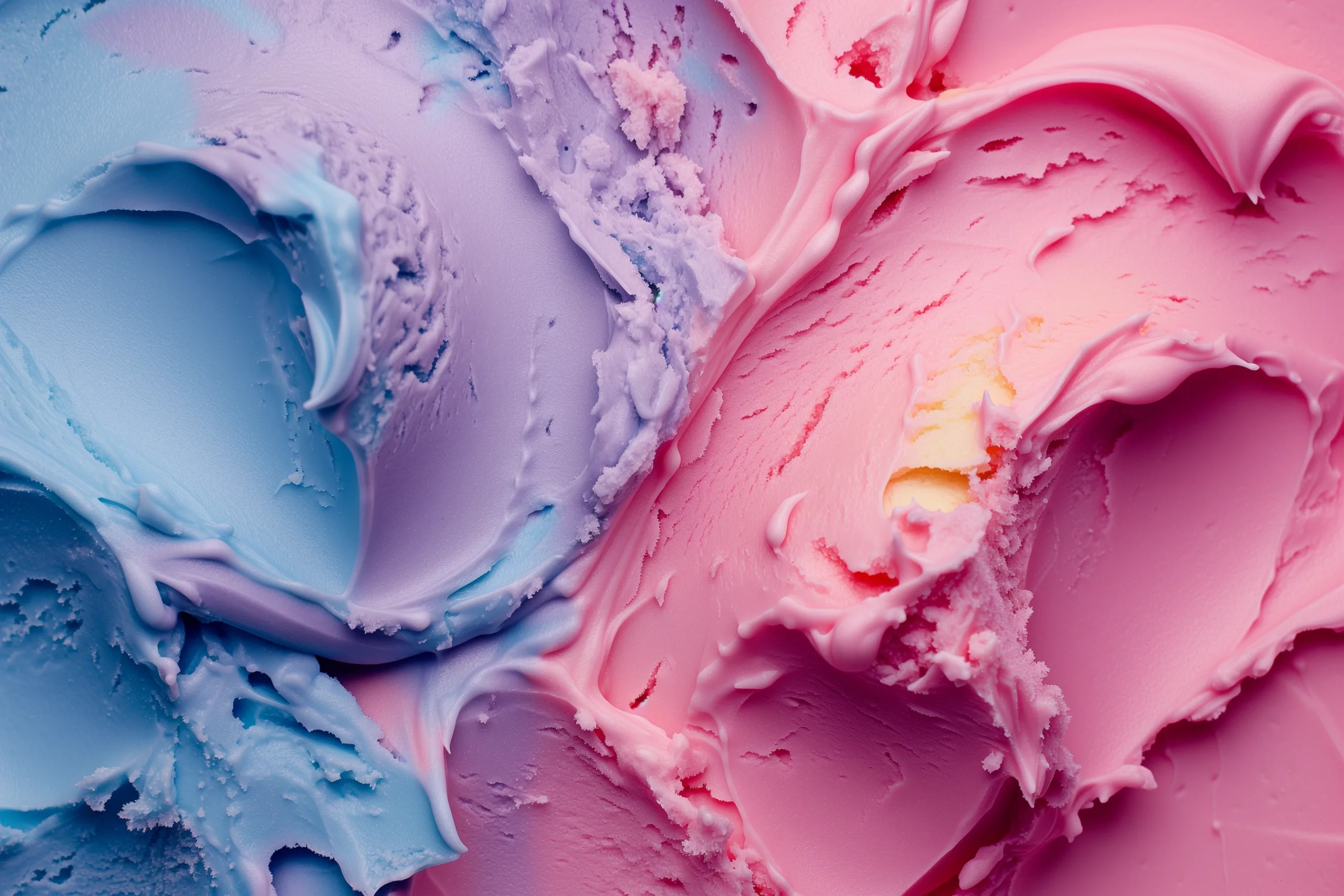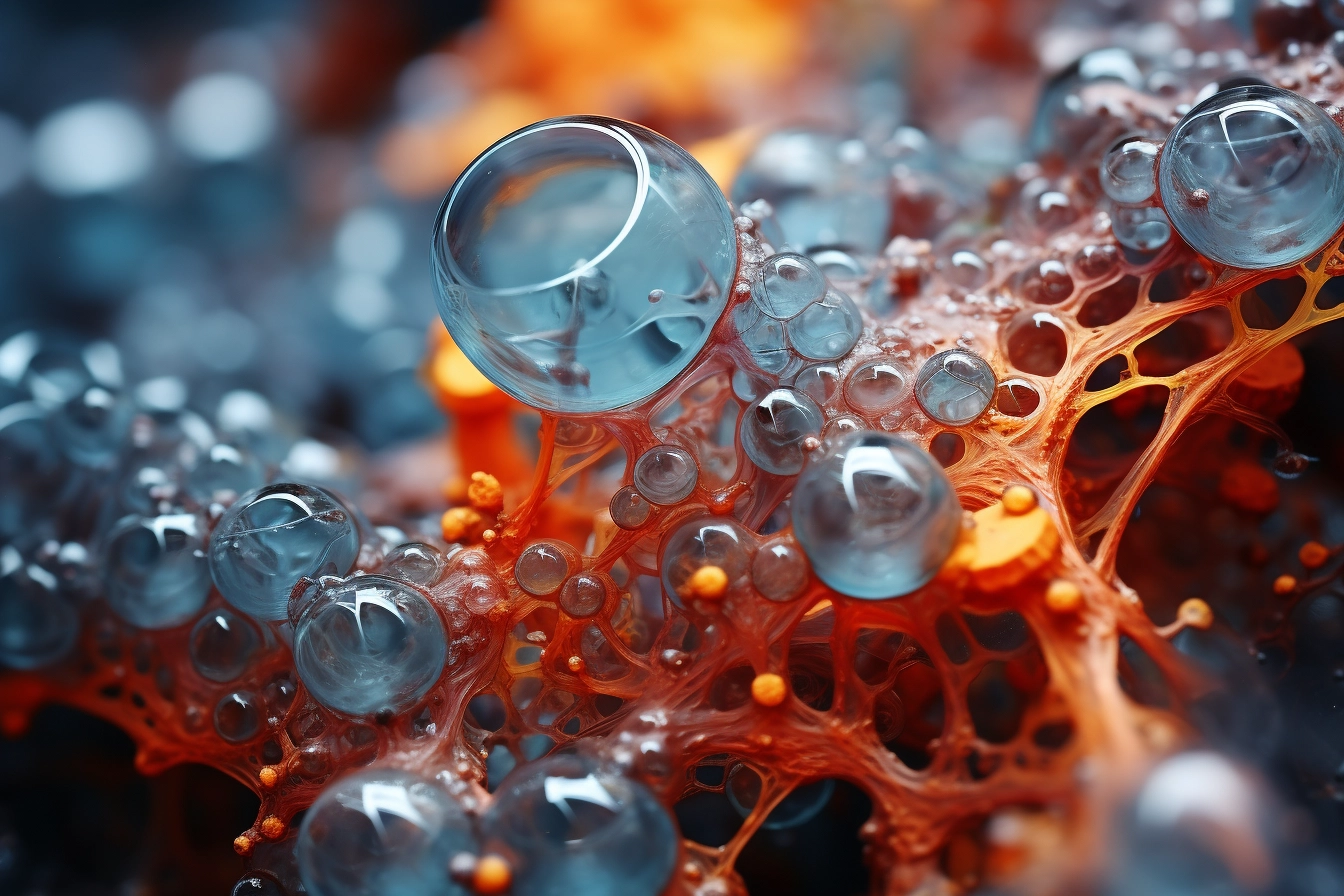published February 6 2023 | 7 min read
You probably have a jar of mayonnaise in your fridge right now. But have you ever wondered how mayonnaise is made? It’s actually a lot simpler than you might think. In this blog post, we’ll explore the chemistry behind mayonnaise and how it’s made.

molecules of mayonnaise emulsification
History of mayonnaise
Mayonnaise is a popular condiment made from oil, egg yolks, and vinegar. The oil and egg yolks combine to form an emulsion, while the vinegar adds flavor and helps to preserve the mayonnaise.
Mayonnaise is thought to have originated in France in the 18th century, though its exact origins are unclear. It became popular in the United States in the 19th century, and today it is a staple in many American households.




microscopic photo of mayonnaise emulsification
The process of making mayonnaise at home
Mayonnaise is relatively easy to make at home, though it can also be purchased pre-made. To make mayonnaise, simply combine oil, egg yolks, vinegar, mustard, and seasoning to taste.
Once these ingredients are combined, they must be processed through a food grinder or a mixer at high speed. As the mayonnaise is mixed, the oil gradually wets the egg yolks, and the water in the oil is expelled as it warms. The oil continues to slowly enter the mixture until it’s of a consistency that’s like that of buttercream frosting. But why does this happen? And what roles do the egg yolks, oil, mustard, and vinegar play? Let’s take a closer look at the chemistry behind mayonnaise.




oil and vinegar emulsification
The chemical reaction that makes mayonnaise
Mayonnaise is a thick, creamy condiment made from egg yolks, oil, mustard and vinegar. The chemical reaction that creates mayonnaise is called emulsification. Emulsification is the process of combining two substances that normally don’t mix, like oil and vinegar.
In order to make mayonnaise, the egg yolks must first be beaten. This creates a base for the mayonnaise and allows the oil and vinegar to mix together. Then, the oil is slowly added to the mixture while continuing to whisk. The vinegar or lemon juice is also added slowly, a little at a time.




microscopic mayonnaise molecules
As the oil and vinegar are added, they form small droplets. These droplets are too large to dissolve in the mixture, so they remain tiny spheres. The water present in the egg yolk is able to dissolve the mayonnaise initially, but once the oil and vinegar droplets are formed, water is repelled. This ensures that the mayonnaise doesn’t break and stays solid. Once the ingredients are mixed well, you slowly drip in the oil, while continuously stirring the mixture. Once all the oil has been added and the mayonnaise is smooth and homogeneous, the mayonnaise is emulsified and ready to eat.
Dive deeper into the chemistry of mayonnaise
When making mayonnaise, you add oil to the egg yolk. The medium in which these two components exist is a liquid (oil) and a solid (egg yolk). When you slowly add oil to the egg yolk, small fragments of egg yolk are left floating around in the oil. These fragments are relatively cold and therefore pretty rigid, so they resist being surrounded by oil. As you keep adding oil, the volume increases and the liquid starts to get warmer and warmer; this makes fragments of egg yolk less rigid and they begin to melt into a soft mass. At this stage, you can’t add any more oil and you have to stop.
The oil doesn’t flow as freely in mayonnaise as it does in uncooked mayo, and this is because of the shape of the droplet. Water droplets in uncooked mayo are ‘spherical’, meaning that their shape is dictated by the shape of the container they are floating in. Once mayonnaise forms, the droplets become ellipsoidal (meaning that they are shaped like an egg, but with only 3 equal sides). The explanation for why this happens is explained below.




microscopic photography of lecithin and phospholipids
The water inside a mayonnaise droplet assumes one of two forms, called ‘transparent’ and ‘opaque’, based on optical properties. The ratio of these forms is about 56% transparent and 44% opaque at room temperature. Oil, on the other hand, is covered with molecules called lipids which have one or more hydrocarbon chains; these chains are usually saturated and generally between 12 and 18 carbons – but can be much longer. The weight percentage of lipids in oil is about 0%, as they float on the surface of the water. To make mayonnaise, we need oil and egg yolk containing emulsifying agents called lecithin and phospholipids. These molecules have a hydrophobic ‘tail’ and a hydrophilic ‘head’. The oil is made up of tiny droplets, and water doesn’t mix very well with oil – so that’s why we use the emulsifier to create the mayonnaise sauce.
The benefits of making your own mayonnaise
Making your mayonnaise is not only delicious, but it also has many benefits. For one, you know exactly what goes into it and can control the quality of the ingredients. Additionally, making mayonnaise is a great way to impress your friends and family with your culinary skills. Finally, the process of making mayonnaise is fascinating from a chemical perspective.









